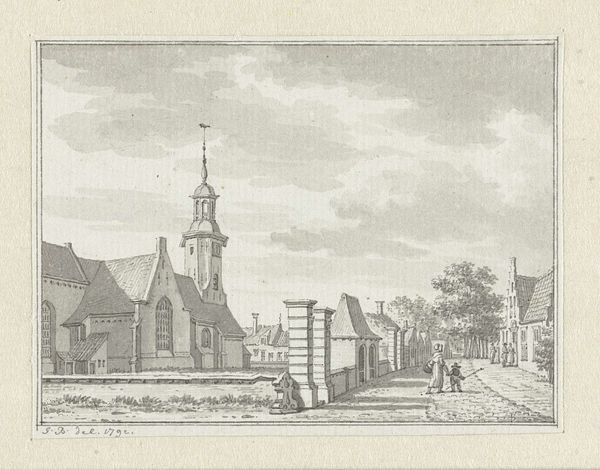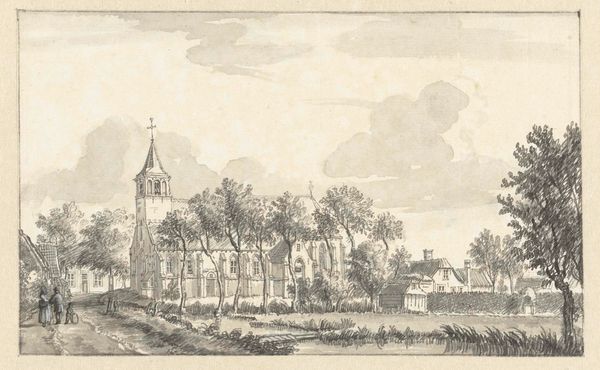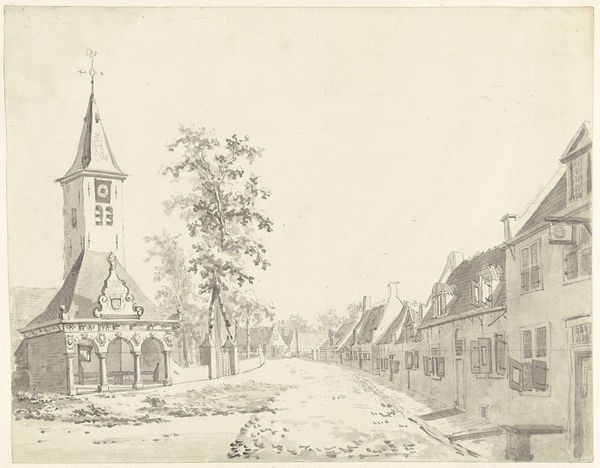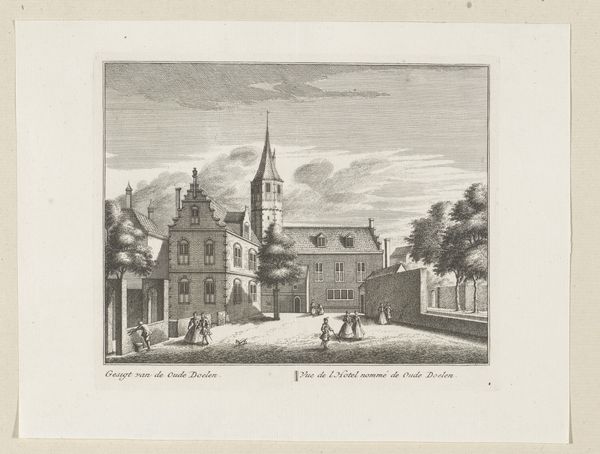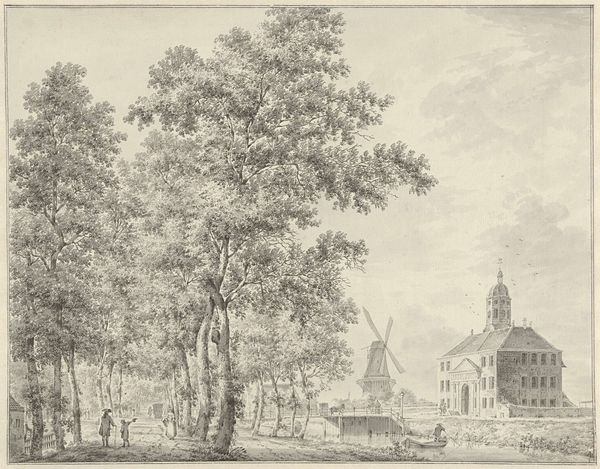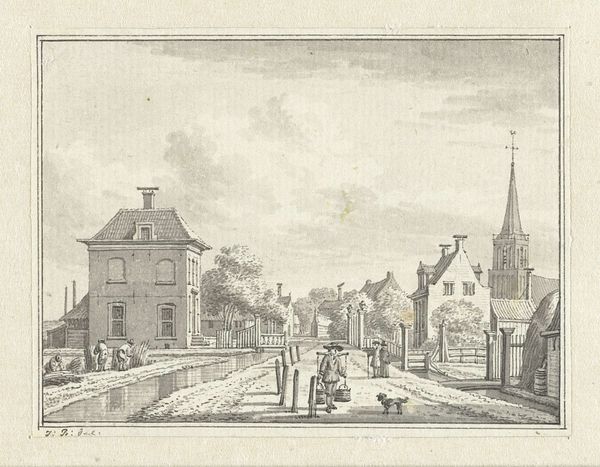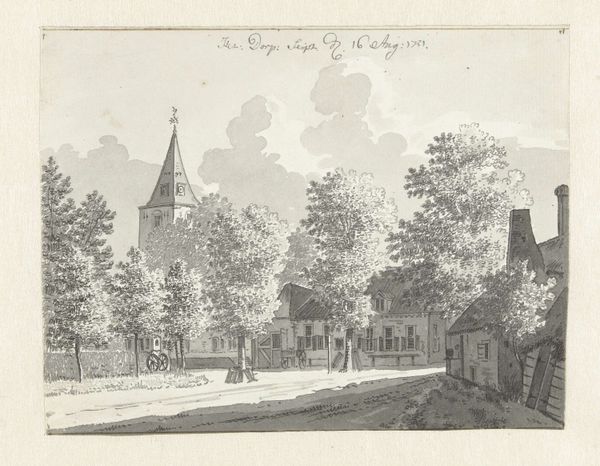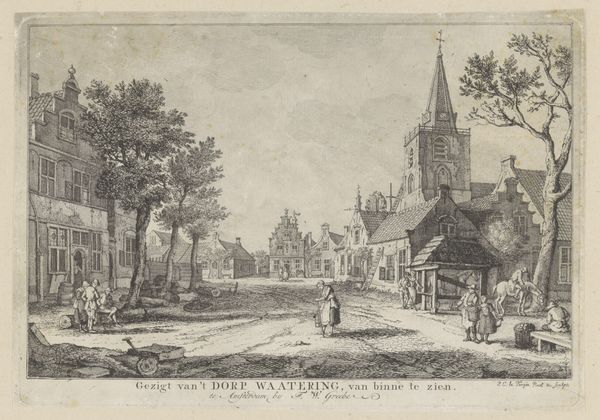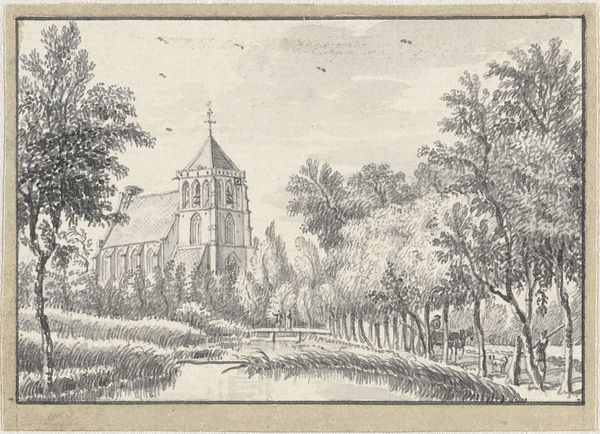
drawing, pen
#
drawing
#
neoclacissism
#
landscape
#
pen
#
cityscape
Dimensions: height 80 mm, width 105 mm
Copyright: Rijks Museum: Open Domain
Curator: Welcome. Let's take a closer look at Jan Bulthuis's "Gezicht te Serooskerke," created in 1791. The artwork is a drawing, skillfully executed with pen. It's a cityscape that embodies the Neoclassical aesthetic. Editor: It strikes me as very… ordered. The buildings are aligned perfectly. I am wondering about the social dynamic of it. Did the local population embrace such structure? Curator: Precisely. The ordered depiction of Serooskerke mirrors the Enlightenment ideals of order and rationality. Think of it as an artistic embodiment of civic pride, portraying the town in the best possible light for visitors and inhabitants alike. Editor: But isn't there also something deliberately softened by the trees? The rough textures achieved by ink point to nature which offsets any political statement with elements of the picturesque, or are we looking at class division here? I suppose common folk could feel estranged from such displays of calculated composure? Curator: A sharp observation! While the built environment exudes order, the organic forms of the trees and figures offer a softening contrast. These features catered to a growing appreciation for the picturesque, blending neatly with the formal expectations of the time. Yet the image clearly speaks to civic virtue and the role of enlightened governance, a visual rhetoric carefully consumed and understood by the elite classes who held power in that society. Editor: It is remarkable that something made using pen can speak with so much authority! Is it possible the lines were enhanced, deepened after a lighter initial sketch, maybe? The social pressures alone might lead the author to over-represent in such a controlled environment. Curator: The medium certainly plays a role. The precision afforded by pen allows for sharp lines and minute detail, befitting the Neoclassical emphasis on clarity. Given its Neoclassical context, there's likely been a sustained attempt to both represent reality and refine it according to prevailing tastes, something very marketable during that period. Editor: Right, so a careful rendering meant to express control, a vision materialized in crafted ink, for a selective patron or art consumer. Food for thought! Curator: Indeed. It is interesting how the visual is inevitably entangled with political ambition and personal intention. Editor: The material tells many stories, from the artisan's hands to its final public encounter, revealing a society’s dreams through artistic production.
Comments
No comments
Be the first to comment and join the conversation on the ultimate creative platform.
